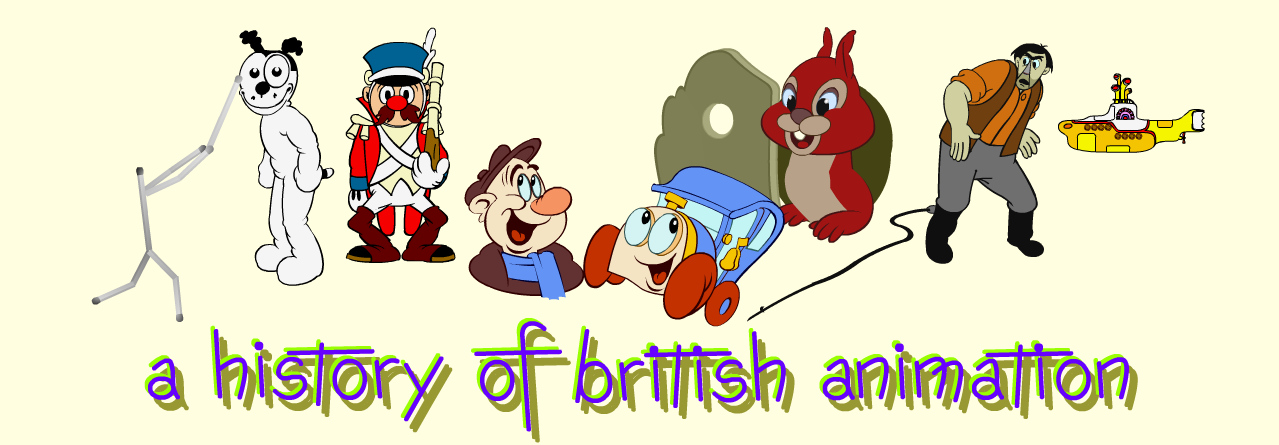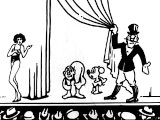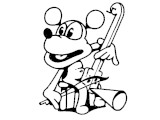

|
 | HORACE SHEPHERD LTD(1930-1931) |  |
||
|
Horace Shepherd Ltd was formed by music composer and arranger Horace Shepherd in the summer of 1930 with himself and his wife as directors. Its history is encapsulated in this report of its demise, from The Bioscope 29 April 1931: HORACE SHEPHERD'S FAILURE In the latter half of the 1920s Horace Shepherd had built a successful career writing scores for the orchestral accompaniment of silent films, only to have it rendered redundant by the advent of sound. Convinced that recording the music for sound films would be short-lived and not provide a sufficient income, he looked round for other ways to exploit sound films. He hit on the idea of dubbing different language versions at the same time as recording the music, but although initially successful his idea was not adopted by British producers, and while he was hired by a French company it failed to take off there either. Horace had worked with Norman Cobb in 1926, on the Singsong series of sing-along cartoons, made by Ideal Films to cash in on the success of the American Song Car-tunes being distributed in the UK by Pathé. Horace arranged the score to accompany these silent films, and presumably provided Cobb with the timing for the "bouncing ball" (in this case the Ideal logo) and subsequent animation. The inclusion in the scores of "quaint and novel effects" (The Bioscope, 17 June 1926) suggests he may also have had a hand in planning the comic elements. Horace says that the idea of a series of sound cartoons came from Cobb, but he clearly thought it a good proposition. Walt Disney's success with Mickey Mouse had shown how popular sound cartoons could be. Horace and Norman planned a series of 12 cartoons featuring a dog called Bingo. Using his experiences working in Paris dubbing the four different language versions of The Beauty Prize, Horace arranged for French versions of the series to be released by Victoria Films and for a German version to be handled by an unnamed German distributor. For the English version he contracted with the UK distribution arm of M-G-M, who needed to handle a quota of British-made shorts under the Cinematograph Film Act, 1927. With these contracts in place and a carefully calculated production cost worked out, Horace must have considered that he had covered himself. The films were planned as sound flms, but Norman was contracted to supply the picture negative only, hence the reference to "silent cartoons" in the report above. The music, dialogue and effects would be recorded by Horace. The first Bingo cartoon, seemingly just called Bingo, was registered by MGM on 9 December 1930 under the Cinematograph Film Act, 1927. It does not seem to have been shown to the trade or reviewed, but on 20 January 1931 numbers 2, 3 and 4 in the series were shown in MGM's viewing theatre. The Kinematograph Weekly (22 January 1931) reported: BINGO CARTOONS. British (U). Syn. 800 feet each. Release date not fixed. –Three of a new series of British cartoons, "Bingo in Balahula," "Bingo Breaks Loose," and "Bingo the Battling Bruiser," were shown. Although they are strongly reminiscent of American efforts and are rather lacking in polish, they are, nevertheless, quite ingenious and have fairly amusing themes. The music and sound effects synchronise well with the action, and help a little to create the desired effect. Useable Quota shorts. The term "Quota" refers to the aforementioned Act, which also required exhibitors to show a set quota of British films. The Bioscope, in its Box Office Film Reviews section, gave the cartoons closer scrutiny: "BINGO IN BALAHULA" (M.-G.-M.) Bingo Cartoons No 2. Length: 800 feet approx. Release Date: Not fixed. Certificate: U. Drawn by Norman Cobb and produced by Horace Shepherd, who was responsible for the music score, these cartoons follow the adventures of Bingo, the pup. The drawings are crude, and the synchronisation of words and music leave a lot to be desired. In No. 2, the pup has a rough time with African natives, but he wins through by catching the king of beasts on a giant "fly" paper. For juvenile audiences. One further cartoon was filmed, but before the soundtracks could be recorded (English, French and German versions had been made for the first four) the company received the court order to cease trading. Norman Cobb's inability to turn out the films to a monthly schedule was a problem, as Horace had presumably not allowed much contingency in his budgeting. The loss of German distribution was a serious blow — this would seem to have been down to a tightening of the German kontingent rules during 1930 (a further, smaller, tightening in July 1931 would make the release of foreign films totally unprofitable). The slowness of returns from France was probably normal practice, but obviously frustrating for Horace. As far as help from his UK distributor was concerned it would appear that M-G-M did not consider the series worth saving. The "arrangement to finance the company" listed as item 5 was probably a desperate measure, doomed to fail. The failure of Horace Shepherd Ltd is not an isolated incident, but typical of the collapse of small film companies whose expectation of rapid returns leads to them being underfunded. It is especially a recurring story in the history of British animation companies who try to survive on theatrical shorts.
|
Filmography (Animation) | ||||
| Bingo Cartoons No. 1 | 1930 | |||
|---|---|---|---|---|
| Producer: | Horace Shepherd | |||
| Distributor: | M-G-M | |||
| Animator: | Norman Cobb | |||
| Music: | Horace Shepherd | |||
| Colour: | Black & White | |||
| Length: | 820 ft | |||
| Release Date: | unknown | |||
| Bingo in Balahula (Bingo Cartoons No. 2) | 1931 | |||
| Producer: | Horace Shepherd | |||
| Distributor: | M-G-M | |||
| Animator: | Norman Cobb | |||
| Music: | Horace Shepherd | |||
| Colour: | Black & White | |||
| Length: | 800 ft approx. | |||
| Release Date: | unknown | |||
| Bingo Breaks Loose (Bingo Cartoons No. 3) | 1931 | |||
| Producer: | Horace Shepherd | |||
| Distributor: | M-G-M | |||
| Animator: | Norman Cobb | |||
| Music: | Horace Shepherd | |||
| Colour: | Black & White | |||
| Length: | 800 ft approx. | |||
| Release Date: | unknown | |||
| Bingo the Battling Bruiser (Bingo Cartoons No. 4) | 1931 | |||
| Producer: | Horace Shepherd | |||
| Distributor: | M-G-M | |||
| Animator: | Norman Cobb | |||
| Music: | Horace Shepherd | |||
| Colour: | Black & White | |||
| Length: | 800 ft approx. | |||
| Release Date: | unknown | |||
Links to Other Sites | ||||
Peter Hale
Last updated 2022
|